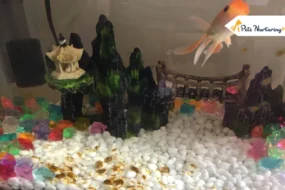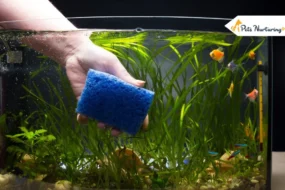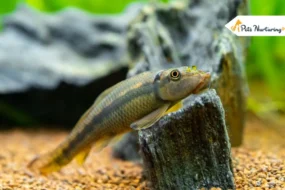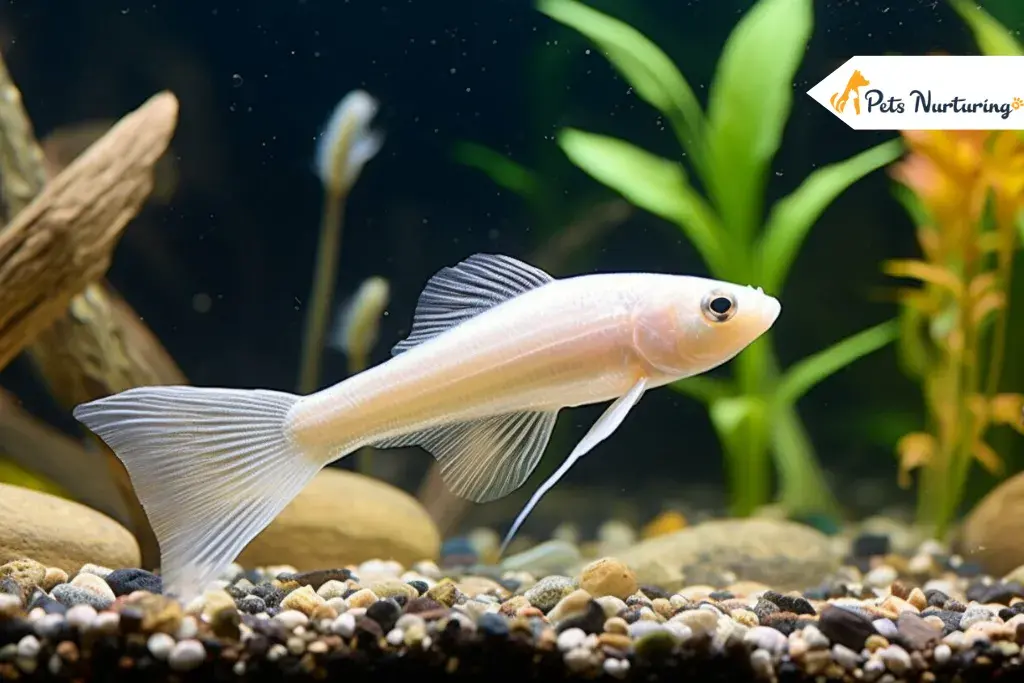
Cory catfish are also call Cory catfish, Corydoras Catfish, and Cory fish; they are very popular as freshwater fish found in pet stores. Cory cats are healthy fish for their size and are staples in freshwater network tanks. Cory Catfish are regularly portraying as reinforcing catfish because of their plates of bone-like material running the length of their bodies.
There are various Cory Catfish types, all fluctuating in size and shading; however, Bronze Cory Catfish are presumably the most well-known. Fortunately, Cory Catfish care is superficial, paying little heed to the sort. Since Cory Catfish care is fundamentally easy, they are exceptionally mainstream with tenderfoot specialists.
Cory catfish are little, tranquil, base-dwelling foragers dear by all who have claim them. Practically all fish species should be kept in schools; accounts of single Cory cats pining ceaselessly from forlornness are regular. Fish cats ought to be kept distinctly with little to medium-size tranquil fish.
Purchasing a Cory Catfish : What to Look For
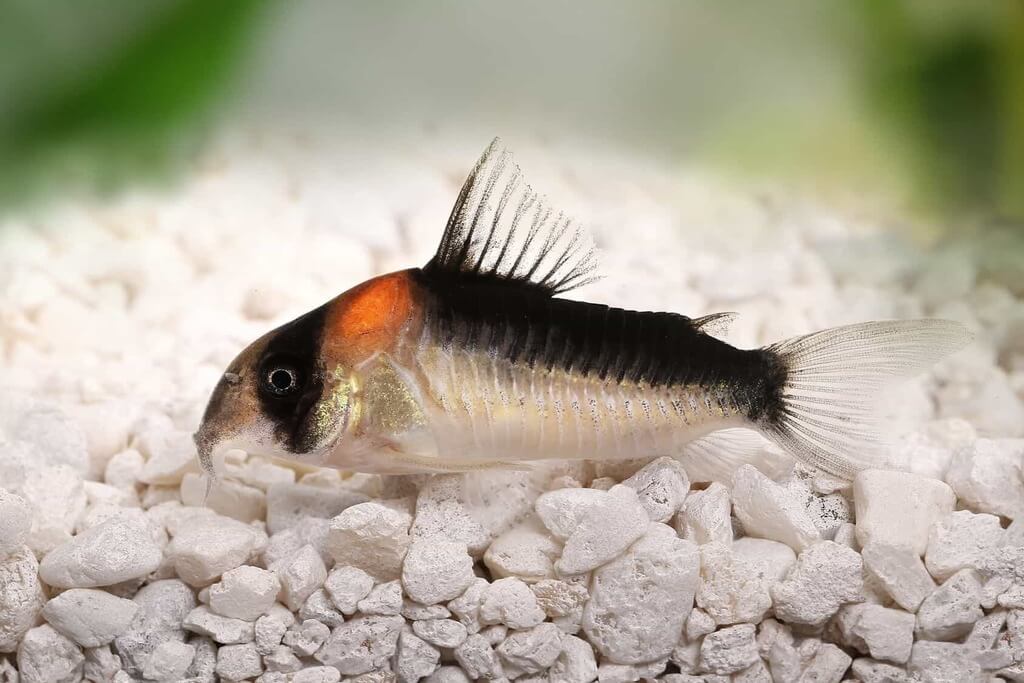
- When purchasing Cory Catfish, search for fish that seem stable, ready, dynamic, and moving. Ensure the Cory has the two of its eyes, and hope to see that its blades and tail are not harming.
- Additionally, ensure Cory has total barbels on each side of its mouth. Barbels look like little hairs.
- Some of the time, Corydoras Catfish might be kept in presentation tanks with fish that pinch at them, making injury the exceptionally touchy zone around their mouth.
- Try not to purchase fish from show tanks with wipe-out, unhealthy, or dead fish. This might be a sign that the Cory Catfish might be unfortunate.
7 Different Types of Cory Catfish
1. Pepper Cory
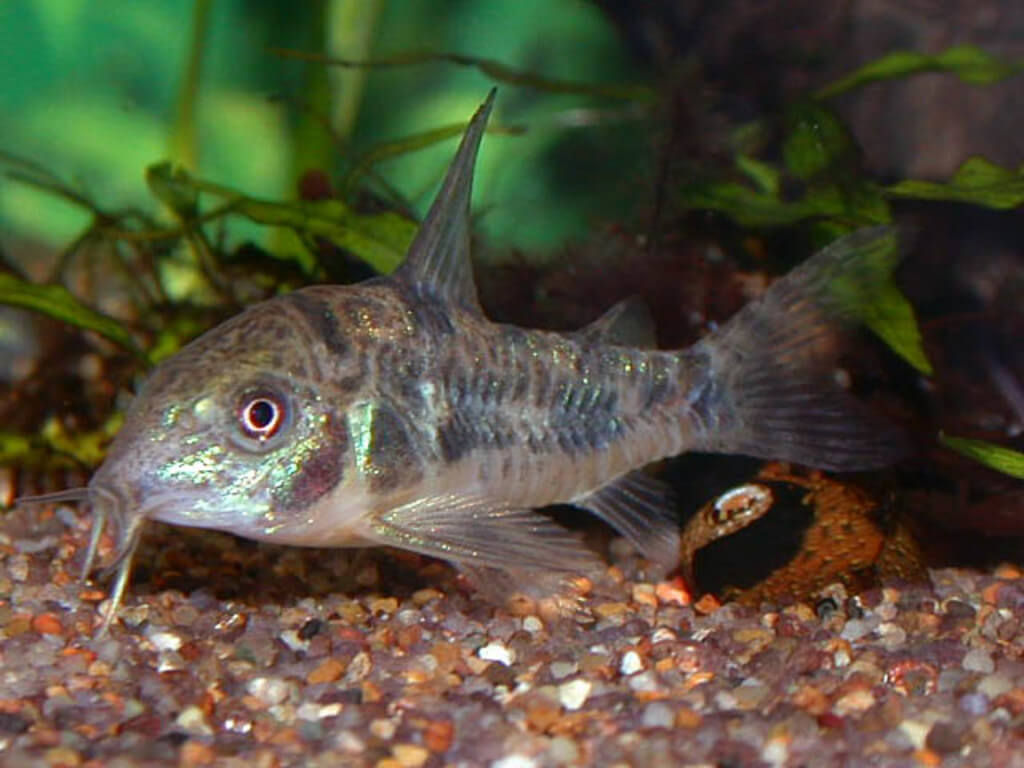
- Their scientific name is call Corydoras Paleatus; they are also familiar as Blue leopard Corydoras. They have a period of 5 years.
- Their minimum tank size is suppose to be 15 gallons. Their pH scale is measure as 6.0 to 7.0.
- As for tankmates, they are very best kept and peaceful with some other smaller and tiny fish.
- Pepper Corys are, for your information, one of the most often family members and are mostly available at the pet shops.
- They are very peaceful and calm species and get along with all other fish, but are strongly recommend not to be place with large and aggressive species.
2. Julii Cory
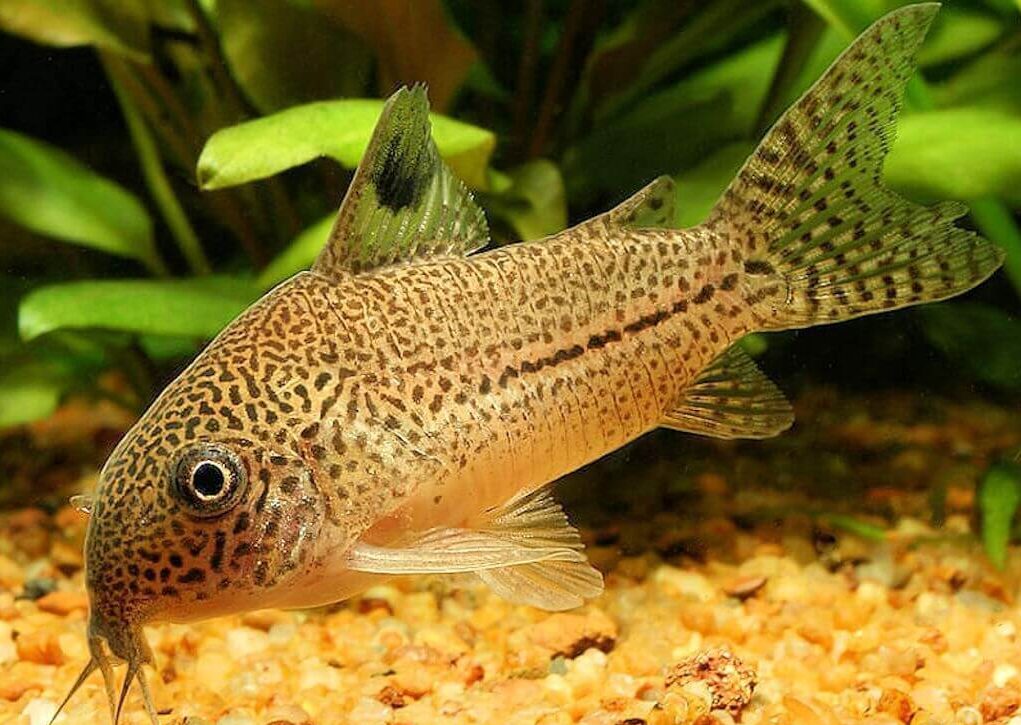
- According to their scientific name, they are calling Corydoras julii. They have an expect lifespan of 5+healthy years.
- Their minimum tan size is suppose to be 10 gallons. Their pH scale is measure as 6.5 to 7.8, and the temperature is measure as 73 to 79 degrees of Fahrenheit.
- As for tankmates, they are very peaceful and bottom-dwelling in schooling fish nature.
- Even though this species might be seen as available to be purchase in pet shops, it is a genuine article once in a while. Instead, what is mark as a Julii is its kissing cousin, the Three Stripe Cory.
- Genuine Julii’s have that are, for the most part, not associate with long chains, as they are in the Three Stripe Cory.
3. Three Stripe Cory
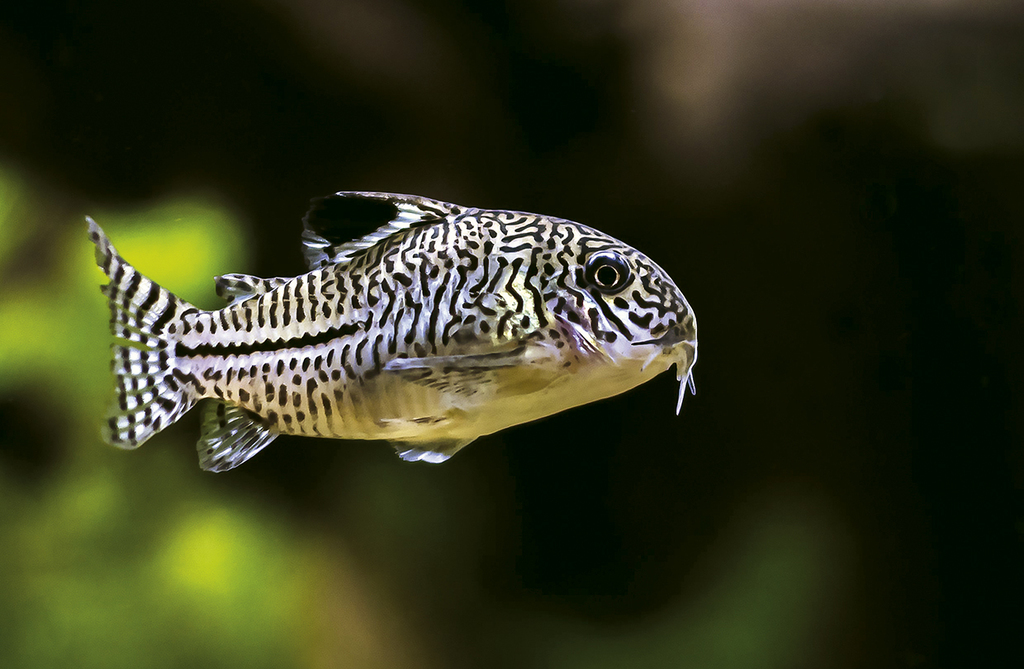
- According to their scientific name, they are known as Corydoras trilineatus. They have an expect lifespan of 10 healthy years.
- Their minimum tank size is 10gallons. Their pH scale is measure as 5.8 to 7.2, and their temperature is estimate between 72 to 78 degrees of Fahrenheit.
- As for tankmates, they are very peaceful and are advise to keep in small schools.
- The Three Stripe Cory is promptly accessible in most pet shops, yet it could be a Julii Cory.
- Three Stripe Corys can be recognize by the head’s spots associate with a long string, giving them a labyrinth-like appearance.
4. Bandit Cory
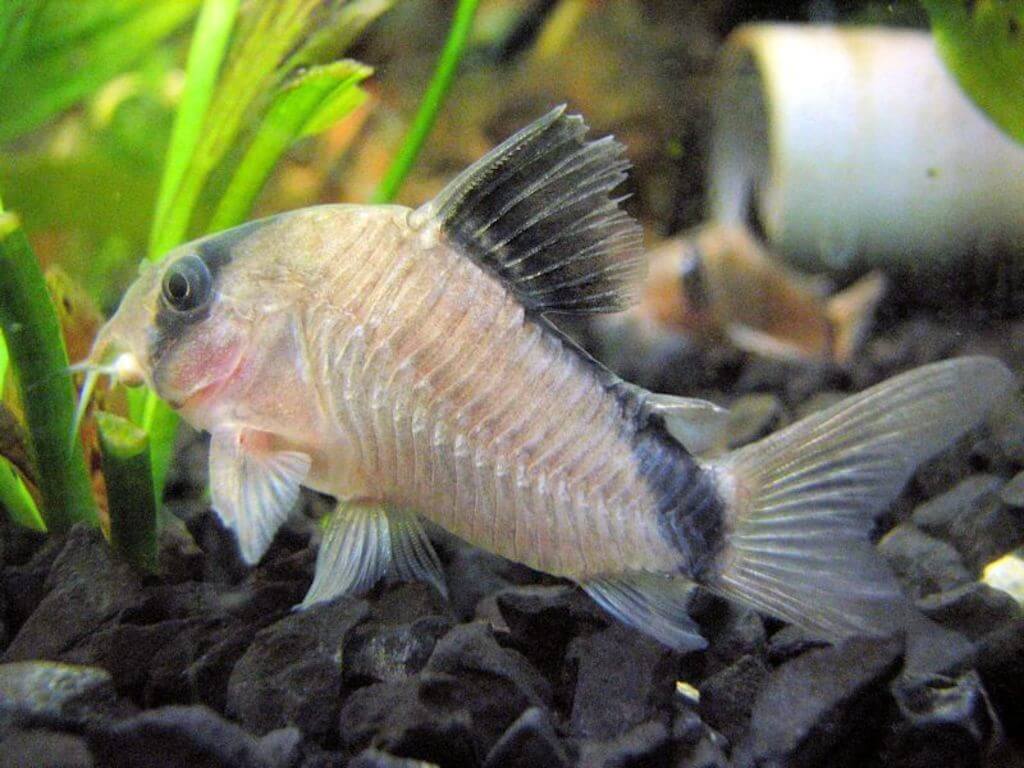
- According to their scientific names, they are known to be Corydoras Metal. They have an expect lifespan of 5 healthy years.
- Their minimum tank size is 10 gallons. Their pH scale is measure as 6.5 to 7.0, and their temperature is estimate between 72 to 79 degrees of Fahrenheit.
- As for tankmates, they are peace maintaining schooling species.
- Crook Corys have been in the aquarium exchange for quite a while. They are one of the more mainstream individuals from this family.
- They are virtually recognizable by the dark cover over the eyes. Outlaws are more -touchy to varieties in water temperature than some different species.
5. Slunk Cory
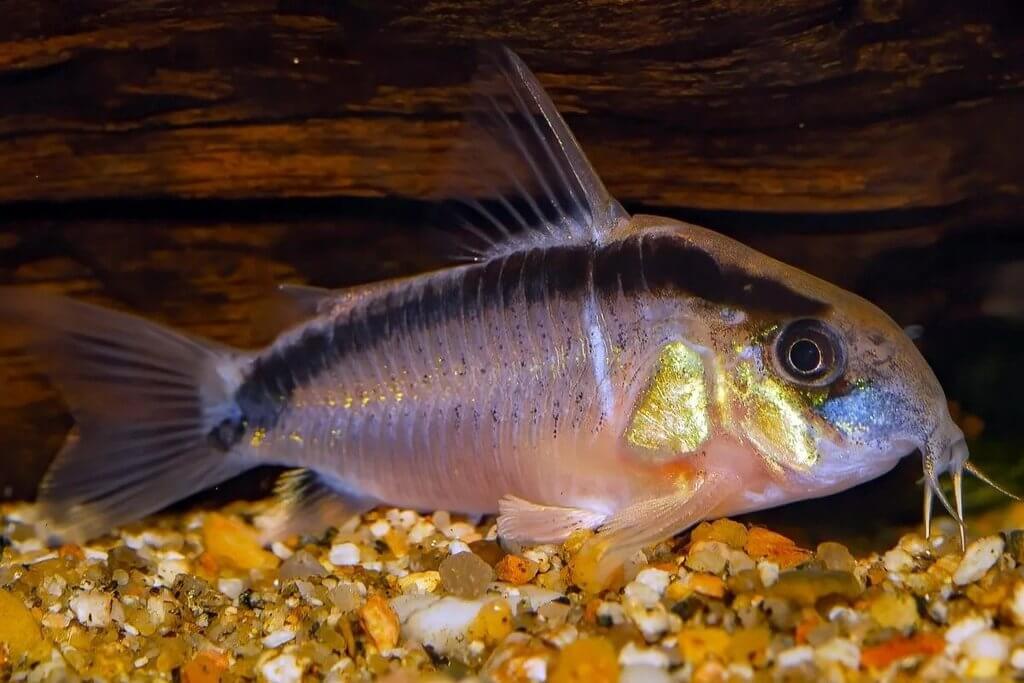
- As per their scientific names, they are calling Corydoras arcuatus. They have an expect lifespan of 5 healthy years.
- Their minimum tank size is 10 gallons. Their pH scale is measure as 6.8 to 7.5, and their temperature is estimate between 72 to 79 degrees of Fahrenheit.
- As tank mates, they have a peaceful nature and love to have a large school.
- Slunk Corys are more-touchy to raise smelling salts and nitrates than different species. Thus, they are not suggesting for a spic and span aquarium.
- Stand by until the tank is developing before adding this species.
6. Panda Cory
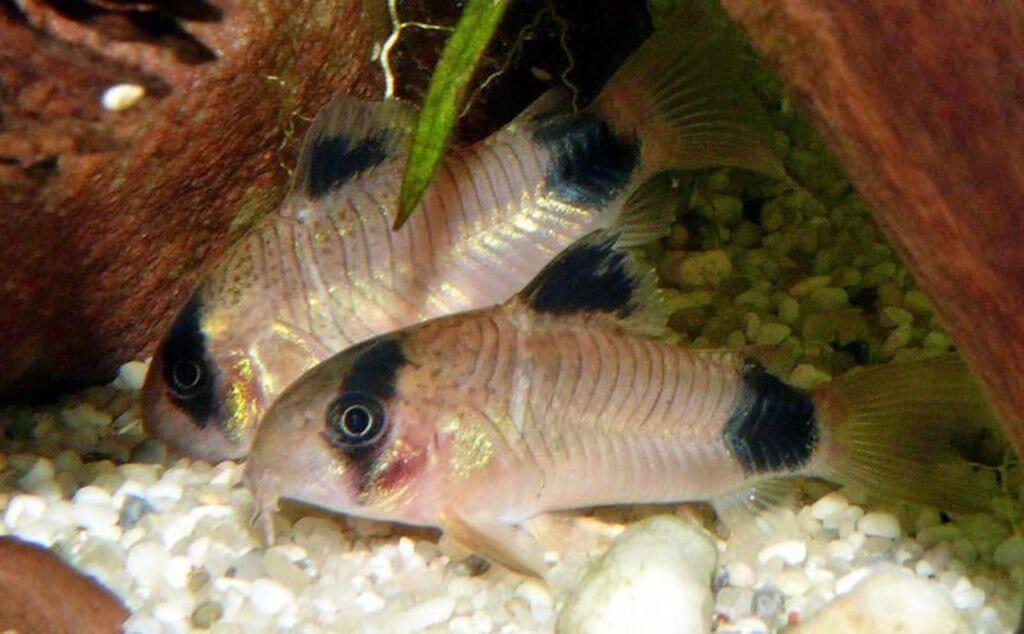
- They are calling Corydoras Panda as per their scientific name. They have an expect lifespan of 10+ healthy years.
- Also, they have a minimum tank size of 10 gallons. Their pH scale is measure as 6.0 to 7.0, and their temperature is estimate between 2 to 12 degrees of Fahrenheit.
- As for tankmates, they are compatible with all sorts of species, kept in school, and share a peaceful nature.
- Panda Corys are profoundly social and ought to consistently be kept in schools of their sort.
- They coexist with nearly any remaining tranquil species and have been known to class alongside other base dwelling species.
- Pandas incline toward cooler temps and are appropriate for unheated aquariums.
7. Bronze Cory
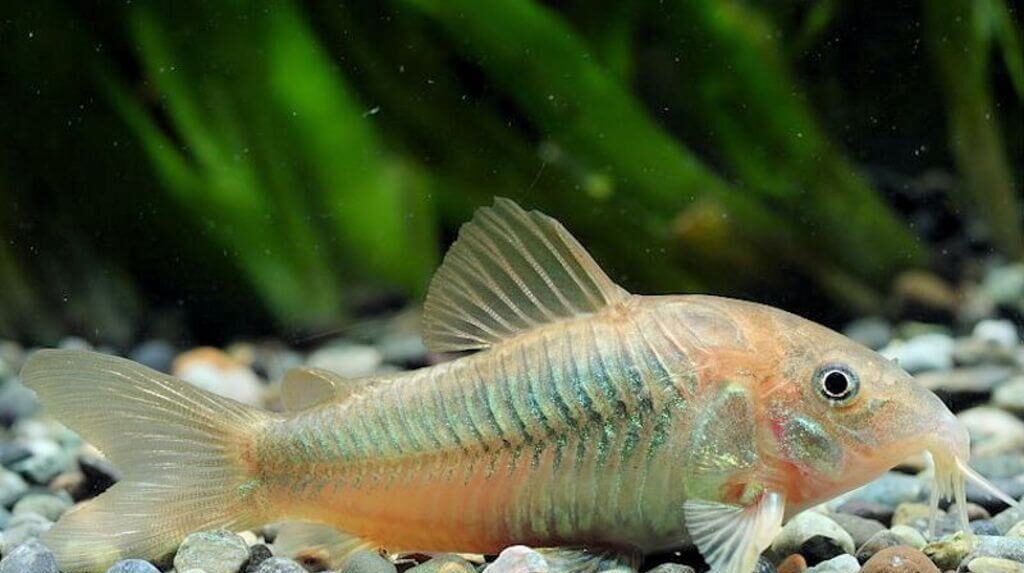
- As per their scientific name, they are famous as Corydoras Aeneus. They have an expect lifespan of 5 healthy years.
- Their minimum tank size is 10 gallons. They have a pH scale of 5.8 to 7.0, and their temperature is suppose to be measure between 72 to 79 degrees of Fahrenheit.
- As for tankmates, they are very peaceful schooling species.
- Like Pepper Corys, Bronze Corys are incredibly mainstream and promptly accessible all over the place.
- These two types of Corys give over the most generally kept individuals from this family.
- Bronze Corys are accessible in a few tone transforms, including green, bronze, pale-skinned, and dark. They do well in the scope of conditions yet ought to be kept in schools.
Cory catfish Are Easy To Care For
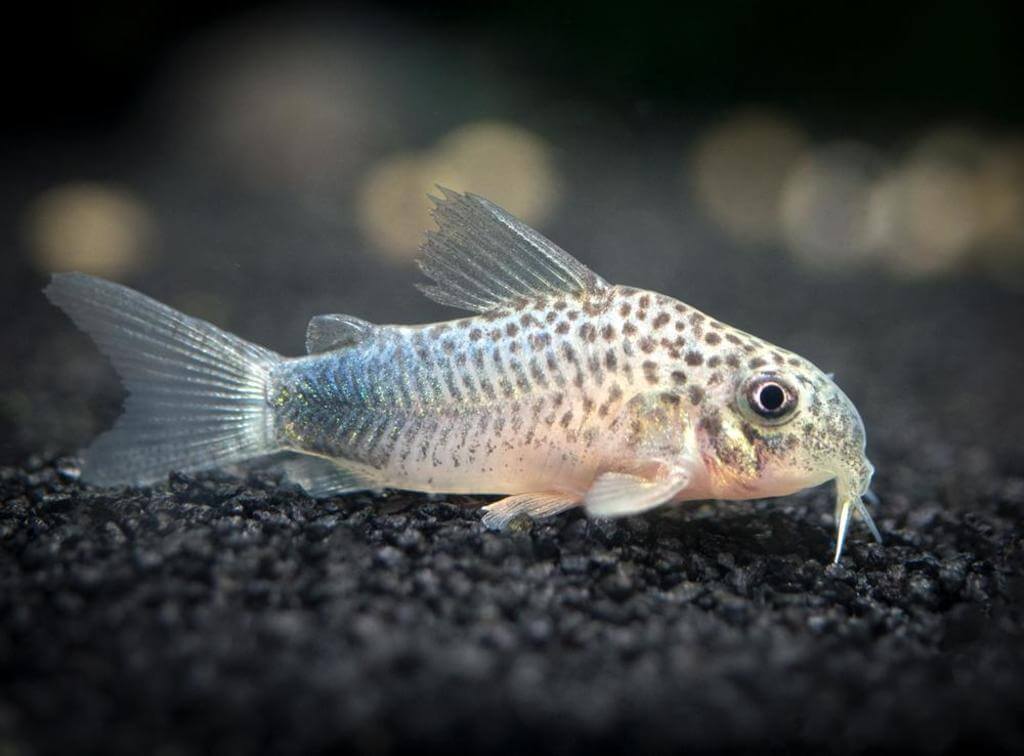
- Probably interestingly, Cory Catfish care is simple. Corys have a quiet, tranquil, and non-forceful personality. Some Cory Catfish types are more bashful and shy than others.
- This may likewise have something to do with their size comparative with the other fish in the tank. It, too, can be identify with the tank dynamic as a rule.
- Corydoras Catfish are dynamic and curious bottom feeders, systematically rummaging the tank base looking for food to eat.
- Cory Catfish can be exceptionally dynamic during the day. Yet, they can likewise invest energy calmly resting unmoving in a similar spot.
- Corys may move about the tank around evening time, yet they appear to be more dynamic during the daytime hours.
Cory Catfish School Together
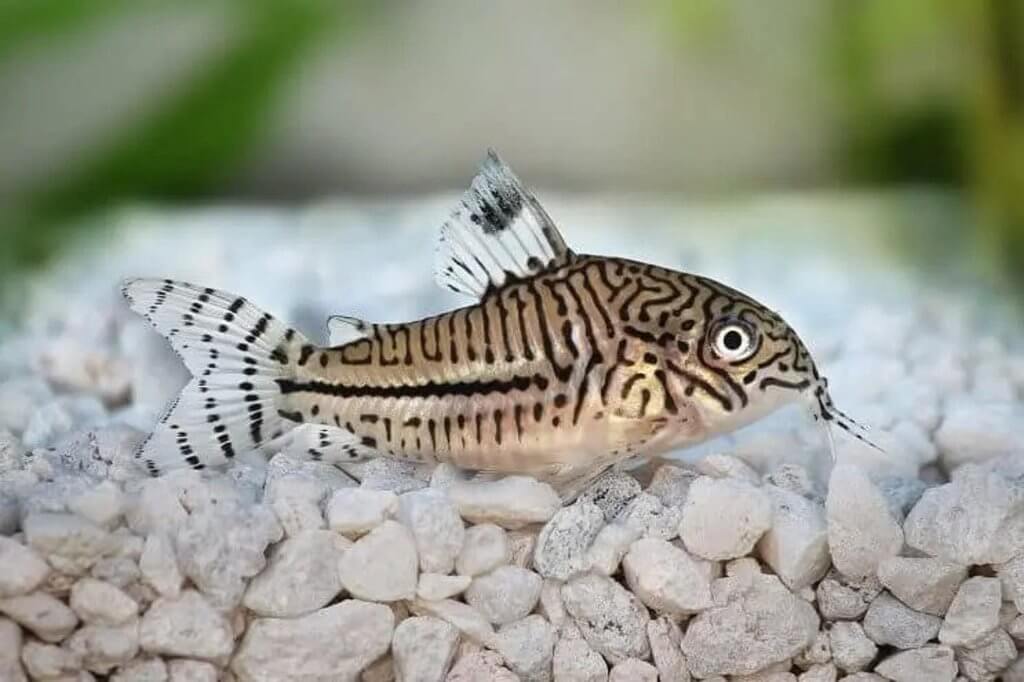
- Cory Catfish are exceptionally social animals, particularly with others of their sort. While Cory Cats can endure alone, they appear to be a lot more joyful in a gathering of at least two.
- Two Cory Cats of a similar sort will frequently remain nearby to each other as they move all through the tank to take care of.
- This is particularly evident when they rest. At the point when one Cory Cat enjoys a reprieve toward the side of a tank, other Cory Cats will quite often be seen an inch or two away.
- Two Cory Cats of various sorts may act similarly. However, all in all, Corys of a similar kind appear to remain together regularly.
On the off chance that aquarium size licenses, Cory Catfish group in gatherings of at least six.
Cory Catfish tutoring conduct is a lovely, intriguing thing to see as the fish move all through the tank adjust like an exact dance outfit.
Living Space and Parameters
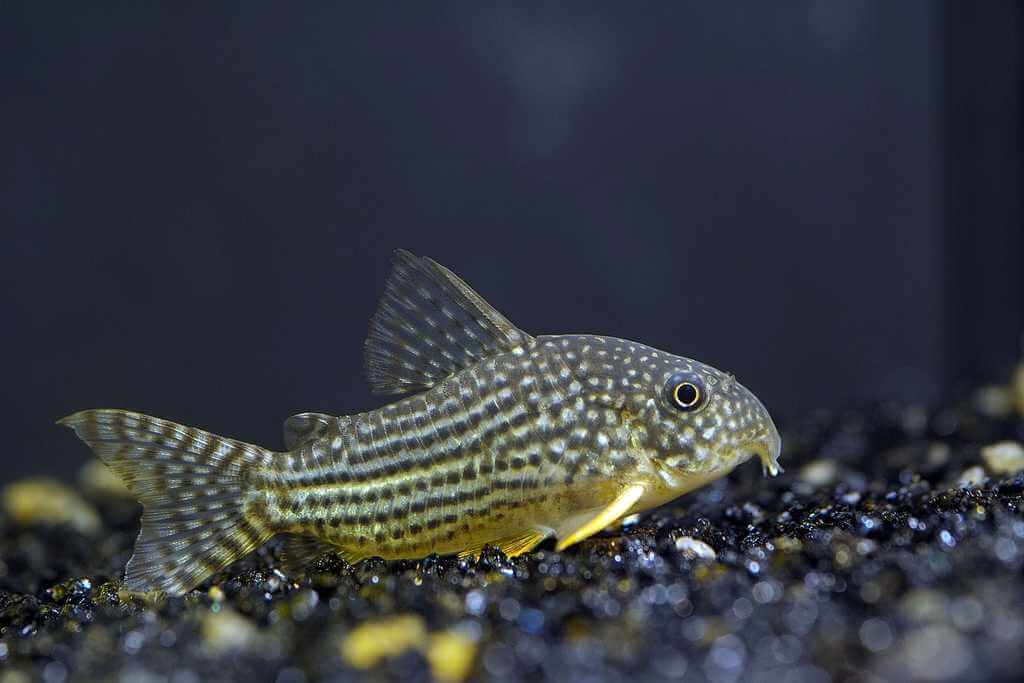
- Natural surroundings: A Cory Catfish is a bottom feeder, so it’s a smart thought to keep in any event two crawls of aquarium rock or substrate on the tank base.
- Cory Catfish additionally appears to appreciate a tank with heaps of live plants truly.
- Live aquarium plants give cover and concealing spots to the fish to rest.
- At long last, make sure to incorporate rocks and enrichments that give spots to investigate.
Water Parameters: While Corydoras Catfish can do well in a broad scope of water conditions, keeping the fish in set up network tank water is a sure thing:
| Temperature | 72 to 78 Degrees of Fahrenheit |
| Aquarium pH | 7.0 to 7.8 |
| Lighting | Normally |
While aquarium pH and water temperature can reach out past the normal network tank range, it’s essential to look after solidness.
To maintain a strategic distance from unexpected movements in conditions. Ensure Ammonia and Nitrite levels are kept at 0 ppm and control Nitrate development with standard incomplete water changes.
Helpless Water Conditions :
- Cory Cats don’t do well in tanks with helpless water conditions. High Nitrates appear to pressure Cory Cats and make them powerless to infections.
- Additionally, abstain from unreasonably working up the tank base while cleaning. This can deliver a lot of rotting genuine issue into the water segment and start a bacterial sprout.
- The equivalent goes for revamping designs. Corydoras Catfish may create white patches around their mouths and barbels.
- This condition should be dealt with immediately. Whenever left untreated, Corydoras Catfish will quit eating, develop noticeably more slender after some time, and at last kick the bucket.
Cory Catfish Diet and Feeding
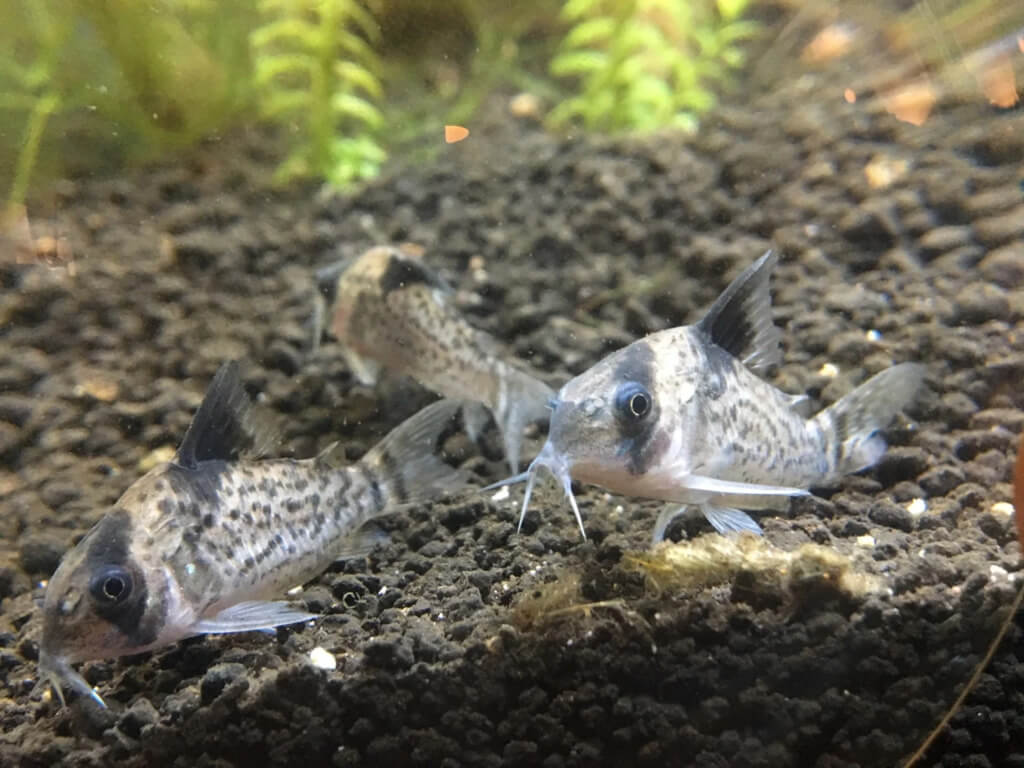
- Cory Catfish diet incorporates essential food types, including fish drops, pellets, and bottom dweller tablets.
- Cory catfish will go through a ridiculous amount of time advancing across the tank base, looking around for food. They will even move the surface rock around a spot with their mouths, burrowing for additional.
- While their taking care of capacity makes Corydoras Catfish great tank cleaners, they should not be viewed as a substitute for legitimate tank care.
- While Corydoras Catfish are adroit at searching for, in any case, uneaten food, the Cory Catfish diet can’t be simple left-overs.
- Left-overs might be hard to find, so specialists need to ensure Cory Cats are getting their dietary prerequisites met with supplements expected explicitly for them.
- Maintain a strategic distance from the impulse to overload. Just feed Cory Cats a measure of food that can be eaten in around 5 minutes.
Cory Catfish Lifespan
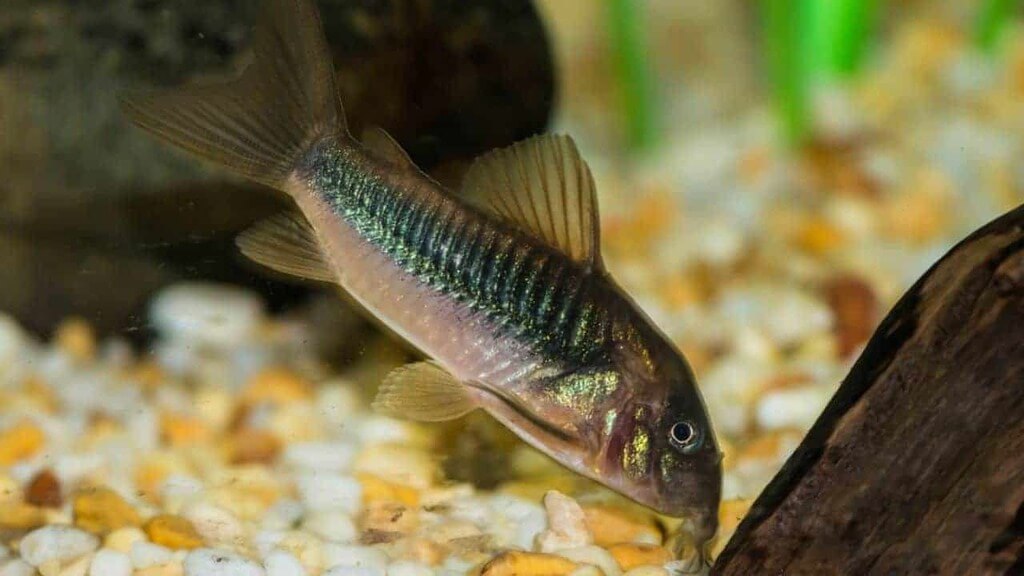
- Reliable and tough, Cory Catfish’s life expectancy can be for quite some time contrasted with other fish.
- Cory Catfish’s life expectancy can be five years, or essentially more, under the right conditions. It’s normal for some Cory Cats to pass on soon after being add to a tank.
- This could be because of the pressure to move or move in water boundaries between home tank water and store show water.
- Corydoras Catfish are not as inclined to this as the more fragile Otocinclus Catfish seem to be. Yet, it’s as, however, a chance worth referencing.
Cory Catfish Is a Cuddling Pet You Should Definitely Have!
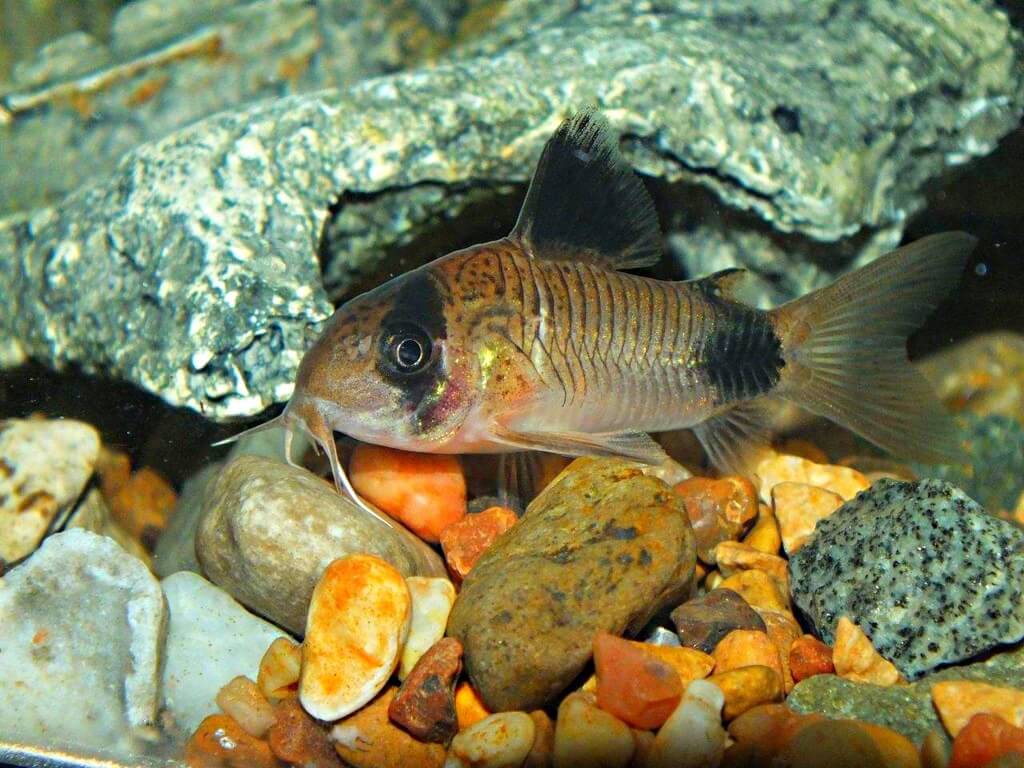
Cory catfish tends to have a calm and pleasant nature and enjoys living in large schools. The best part is that they have a minimum lifespan of 5 years and have minimalist grooming and caring needs.
Keep reading :








